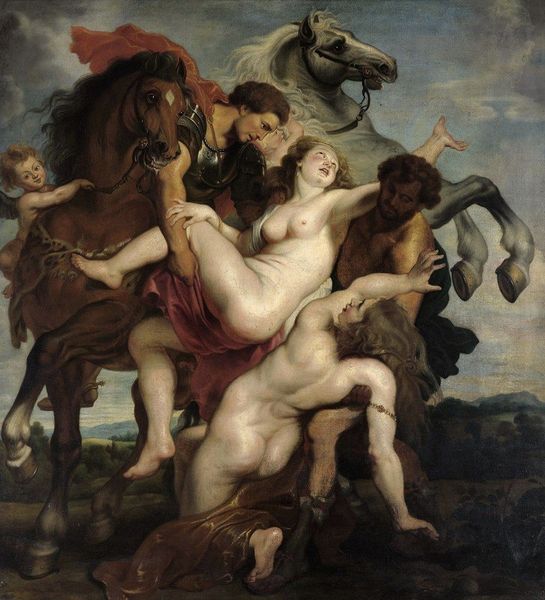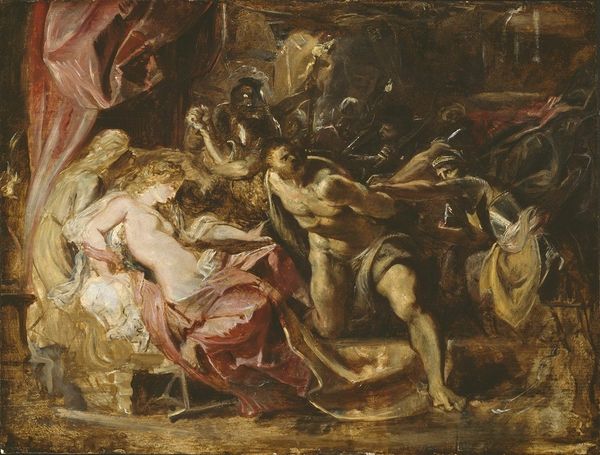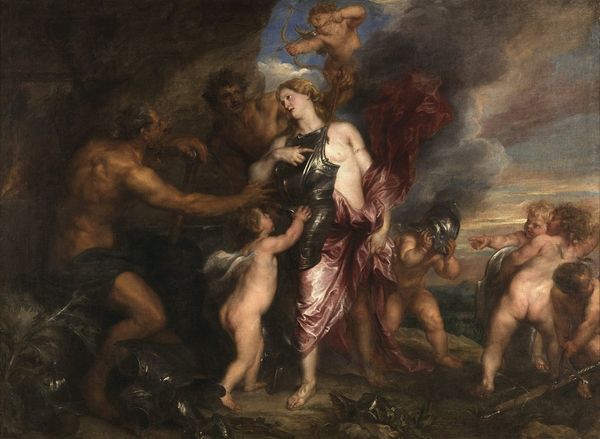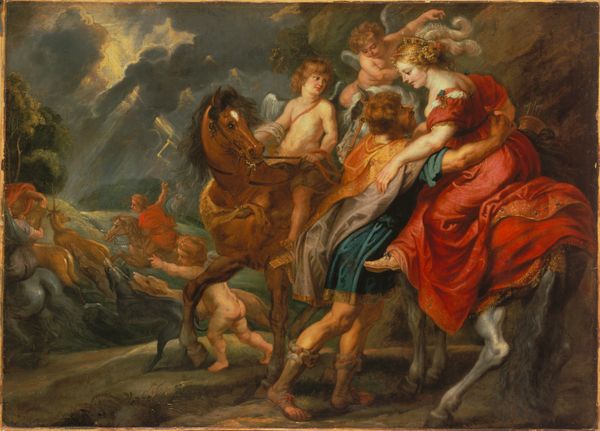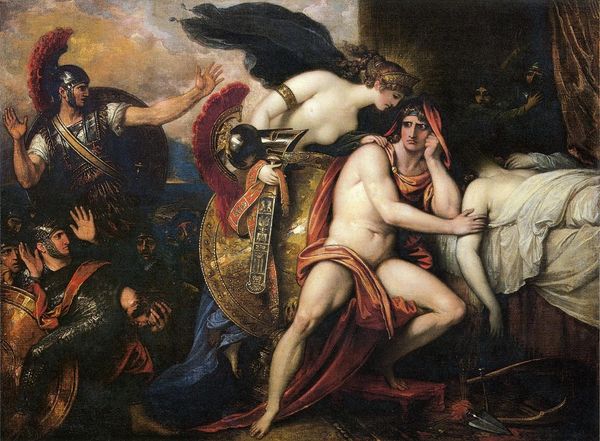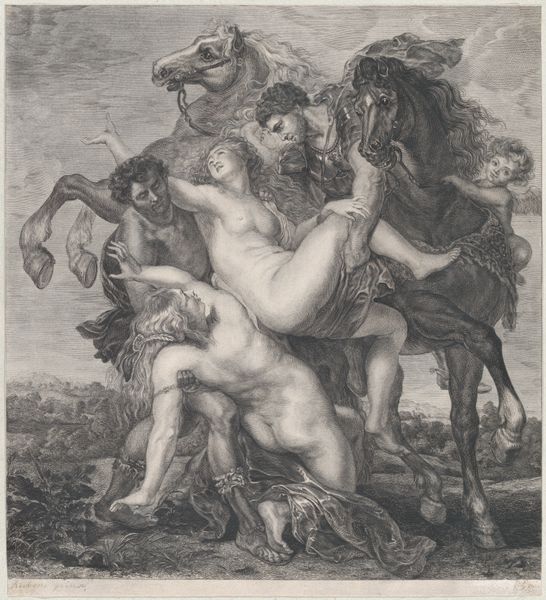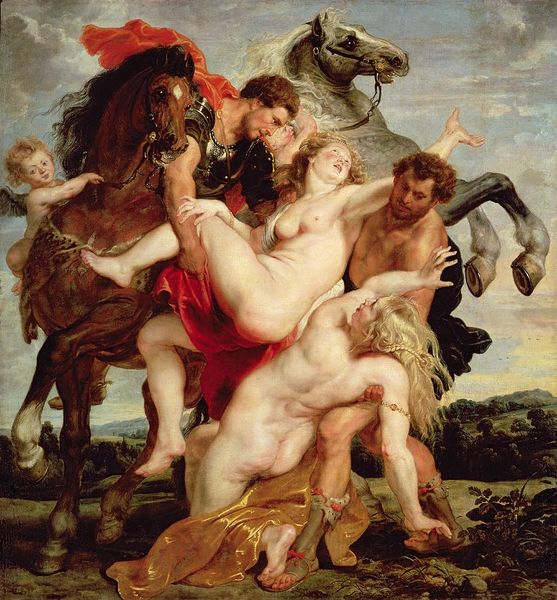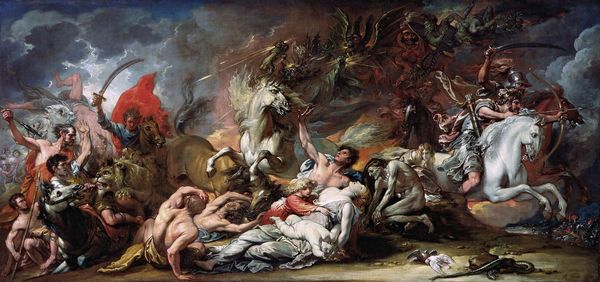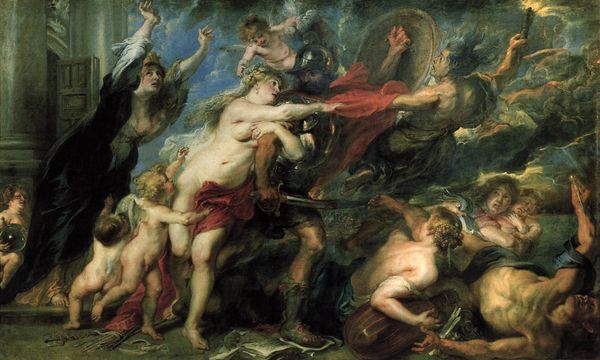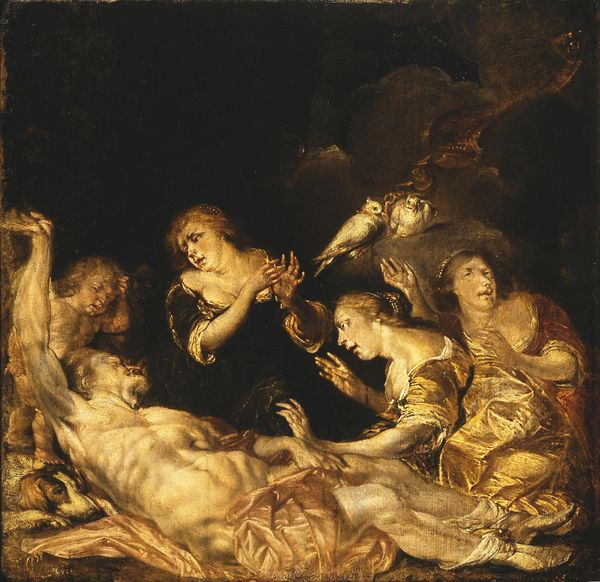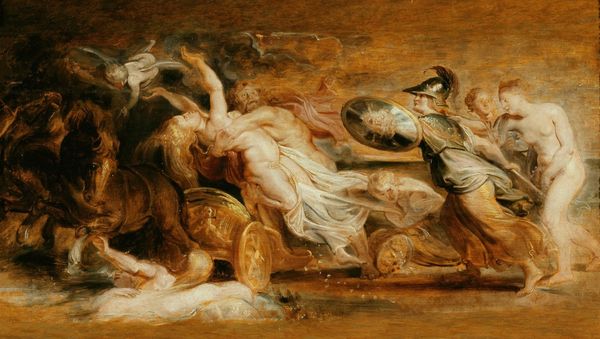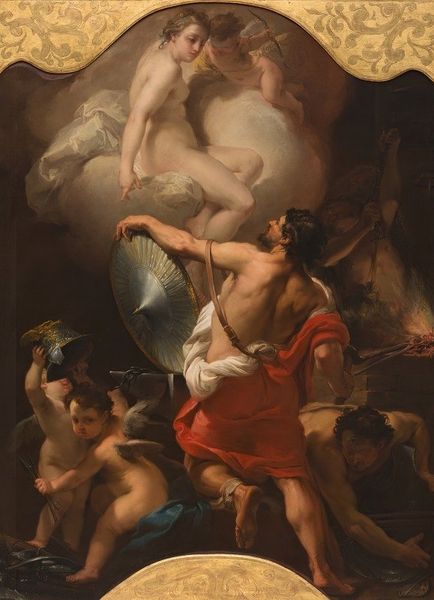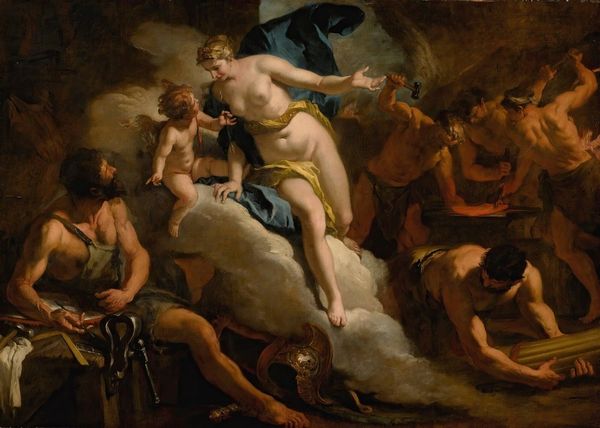
painting, oil-paint
#
narrative-art
#
baroque
#
painting
#
oil-paint
#
figuration
#
oil painting
#
mythology
#
painting painterly
#
history-painting
#
nude
Copyright: Public Domain: Artvee
Editor: Here we have "The Rape of the Daughters of Leucippus," an oil painting by Peter Paul Rubens from 1610 to 1611. It’s quite a dramatic scene. There’s so much movement, with the figures swirling together. It feels overwhelming, almost chaotic. What do you see in this piece? Curator: I see a vortex of passions rendered through symbolism passed down over centuries, the image taps into a deeply rooted cultural memory. Notice how Rubens uses light and shadow? It’s not just about illumination; it's about emphasizing certain elements. Light often signifies purity or truth, yet here it's highlighting the tense, entwined bodies, suggesting an uncomfortable fusion of beauty and violence. What emotions do the colors evoke in you? Editor: There’s a lot of pale flesh, contrasted against darker colors in the background and the men’s armor. It definitely heightens the drama. Is that a common technique for paintings depicting mythology? Curator: Indeed. The contrast reinforces the figures' emotional and symbolic weight. The composition itself—the spiraling figures, the plunging diagonal lines—speaks of an imbalance. This disturbance hints at cultural anxieties concerning desire, power, and violation. Do you think Rubens is merely illustrating a mythological event, or is he saying something more profound? Editor: It’s hard to ignore the title… It sounds like the artist condones of such subject. The expressions on the women’s faces also imply something more profound; is it really about a loving take or a non-consensual act? Curator: Precisely! Here we begin to confront uncomfortable truths about beauty, power, and consent which reverberate into our present day. Looking closely at those expressions can be a lesson for ourselves. Editor: It's amazing how a single painting can hold so many layers of meaning, both beautiful and disturbing. Curator: It serves as a mirror reflecting cultural attitudes and prejudices. Engaging with this piece challenges us to examine the narratives and imagery which influence our perceptions, even today.
Comments
No comments
Be the first to comment and join the conversation on the ultimate creative platform.
